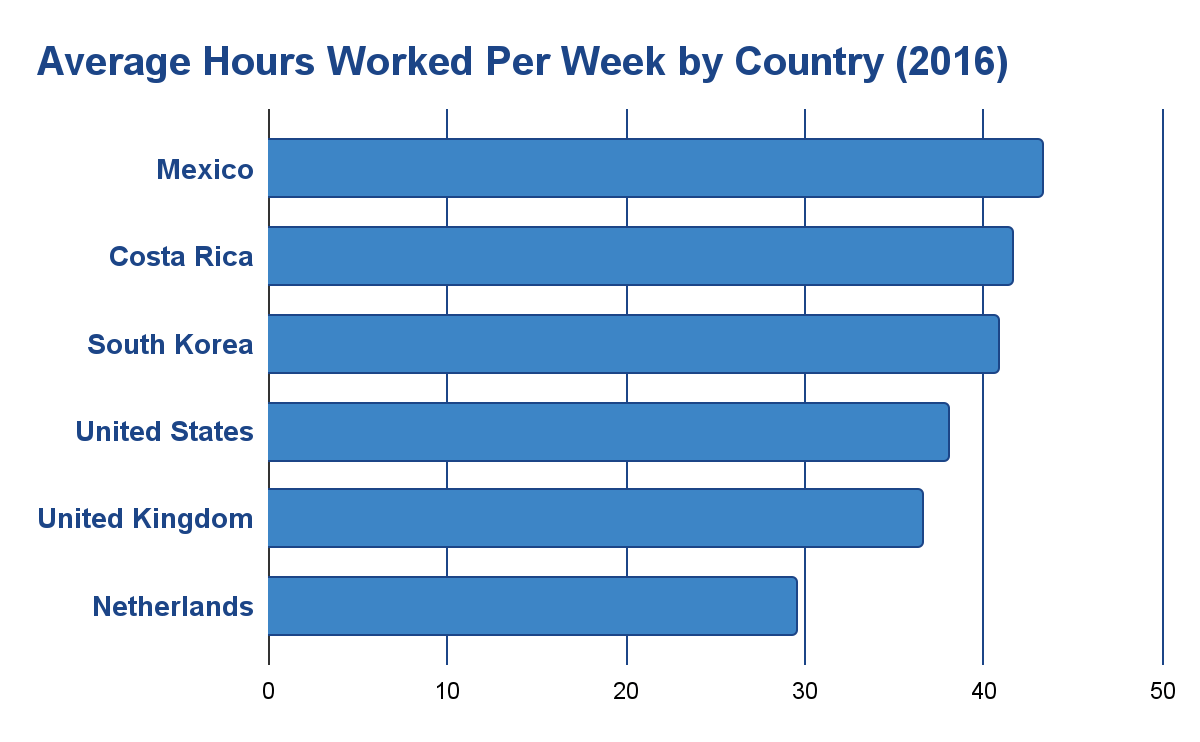The modern workplace is in a state of flux. With the rise of remote work and blurred boundaries between professional and personal life, maintaining a healthy work-life balance has become increasingly difficult. However, the ritual of clocking in and out at set times can be the key to finding equilibrium.
In this article, we’ll explore the critical importance of work-life equilibrium, the mounting pressures faced by today’s professionals, effective strategies to restore balance, and the numerous benefits of leaving work at work.
The Realities of Overwork
Work, while essential, can sometimes come at a high cost. Startling statistics from the World Health Organization (WHO) reveal that in 2016, approximately 745,000 people lost their lives due to stroke and heart disease linked to long working hours. These sobering figures underscore the dire consequences of overworking ourselves.
Contrary to the misconception that more hours equate to greater productivity, research has consistently shown the opposite to be true. Beyond a certain point, fatigue sets in, and our performance significantly declines.
Moreover, companies burdened with overworked employees tend to experience higher turnover rates and increased absenteeism. Overwork, it appears, benefits no one in the long run.
The Global Overwork Epidemic
To grasp the enormity of the global overwork crisis, let’s delve into the average weekly work hours by country in 2016:
These statistics reveal a stark contrast in work hours across countries, underscoring the pressing issue of overwork on a global scale. It’s evident that many individuals worldwide are grappling with long work hours, which can lead to severe health consequences.
The Pressure of Modern Professionalism
Let’s dissect the pressing issue of modern professionalism and the toll it takes on our well-being. Let’s break down this critical issue into three key aspects:
1. Alarming Health Statistics
- Between 2000 and 2016, there was a staggering 42% increase in deaths from heart disease attributed to overwork globally.
- Simultaneously, stroke-related deaths rose by a worrisome 19%.
2. Long Hours as the New Norm
- The culture of extended work hours has become deeply ingrained in many corporate settings and professional expectations.
- Deviating from this norm can be perceived as a career risk, placing professionals in a challenging predicament.
3. The Need for Change
- Initiating change hinges on acknowledging these pressures as harmful rather than commendable.
- The first vital step is recognizing that pushing ourselves to extreme work hours serves no one’s best interests, neither individuals nor organizations.
Hence, the pressures of modern professionalism are undeniable, with health statistics painting a grim picture. However, embracing change necessitates a reevaluation of these norms and a collective acknowledgment of the harm they inflict on individuals and society at large.
The Cycle of Work-Life Balance: Walking the Tightrope of Priorities
Balancing work and life isn’t a static achievement but an ever-evolving journey characterized by ongoing cycles and adaptations. Let’s explore this dynamic process in three key phases:
1. Constant Evaluation and Adjustment
Achieving equilibrium involves a continuous assessment of priorities. It’s akin to walking a tightrope as we navigate the multitude of demands from both work and personal life.
2. Health Risks and Warning Signs
Research highlights that working more than 55 hours per week poses significant health risks. Conversely, those who clock in 35 to 40 hours face substantially lower risks of stroke, heart disease, and stress-related health complications. Vigilance in recognizing these warning signs is vital.
3. Flexibility and Self-Awareness
Maintaining balance requires adaptability, acknowledging that it may vary from day to day or season to season. The key is to remain attuned to the signals from your mind and body. Honesty about your limitations serves as the compass guiding you through this ever-changing journey.
In essence, achieving and preserving a work-life balance is a fluid process that demands continuous evaluation, health-conscious decisions, and a flexible mindset. It’s a journey where each step counts, and where listening to your inner self becomes your guiding star.
Strategies for Achieving Sustainable Work-Life Balance
Balancing work and life isn’t a mere wish; it’s a goal that demands deliberate strategies and actions. Here are practical steps to help you achieve a sustainable work-life equilibrium:
1. Self-Awareness as the Foundation
- Start with heightened self-awareness to understand your work habits.
- Track your work hours and assess their impact on your overall well-being.
- Identify areas where improvements can be made.
2. Prioritization and Boundary Setting
- Reprioritize tasks to focus on what truly matters.
- Set clear boundaries around your work hours.
- Forge healthier habits by consciously allocating time to different aspects of your life.
3. Harnessing the Power of Public Accountability
- Share your work-life balance goals and intended work patterns with colleagues and friends.
- Creating external expectations can make it easier to stay committed and on track.
- Celebrate small victories along the way to reinforce your progress.
4. Employer’s Role in Achieving Balance
- Employers play a pivotal role in reducing overwork.
- Offer flexible schedules to accommodate various needs.
- Embrace remote work options that empower employees to balance their work and life.
- Implement reporting systems that emphasize results over Facetime.
5. Personal Choices and Cultural Shift
- Achieving balance ultimately hinges on personal choices.
- But it also requires a cultural shift in how we perceive work.
- Recognize that a balanced life isn’t just an individual endeavor; it’s a collective effort that can benefit both employees and organizations.
By implementing these strategies and fostering a culture that values work-life balance, we can collectively move toward a more sustainable and fulfilling way of living and working.
The Benefits of a Balanced Work-Life
Achieving a harmonious work-life balance isn’t just a matter of convenience; it’s a gateway to a multitude of advantages that span various aspects of our lives. Let’s delve into the profound benefits that come with escaping the relentless cycle of eat-work-sleep:
1. Enhanced Physical Health
- Improved physical energy and vitality
- Reduction in the risk of health issues like fibromyalgia, hypertension, anxiety, and burnout
2. Mental Well-Being
- Sharpened cognitive function
- Elevated mood and enhanced emotional stability
3. Nurtured Relationships
- Room for fulfilling relationships to flourish and grow
- A sense of purpose that extends beyond professional achievements
4. Organizational Gains
- Increased productivity among employees
- Reduced absenteeism due to exhaustion and emotional distress
- Elevated worker satisfaction leads to higher retention rates and unwavering loyalty
5. Smart Business Sense
- In today’s unpredictable economy, maintaining a balanced and healthy workforce is not just an ethical choice; it’s a prudent business decision.
6. Positive Ripple Effect
- Sustainable work patterns create a positive ripple effect that extends to every facet of life, transforming the job from an energy-draining burden into a genuinely satisfying endeavor.
Hence, the benefits of striking a balance between work and life are far-reaching, touching not only our personal well-being but also translating into organizational success and a brighter future in an ever-evolving professional landscape.
Final Takeaways
The landscape of modern work is complex, with escalating demands often clashing with our fundamental human needs for rest and meaning. However, by boldly acknowledging the realities of overwork, understanding the pressures at play, approaching balance as an ongoing cycle, and implementing sustainable strategies, professionals can challenge and reshape a broken status quo.
Clocking in and out at reasonable hours serves as a ritual reminder that work is not meant to consume life. While our world may be in constant motion, it’s essential to carve out space to replenish, reflect, and rediscover the sources of joy in our lives. The time for change is now.
FAQs
Why do professionals find it challenging to maintain a work-life balance despite knowing its importance?
Heavy workloads, blurred boundaries between work and life, and cultural expectations make achieving balance a formidable challenge. Additionally, individuals often overestimate their capacity while underestimating the costs of overwork. Saying “no” can feel risky in a competitive professional landscape.
How can employers support their employees in achieving a better work-life balance?
Employers can foster a balanced work environment by offering flexible schedules, remote work options, tracking work hours instead of Facetime, modeling sustainable practices from leadership down, and providing services like childcare. Avoiding burnout is key to boosting retention rates.
What are some common misconceptions about work-life balance, and how can they be debunked?
A prevalent misconception is that more hours worked equate to increased productivity and commitment. However, research shows that productivity sharply declines after 55 hours per week. Embracing reasonable work hours sharpens focus and allows individuals to achieve better results in less time.


